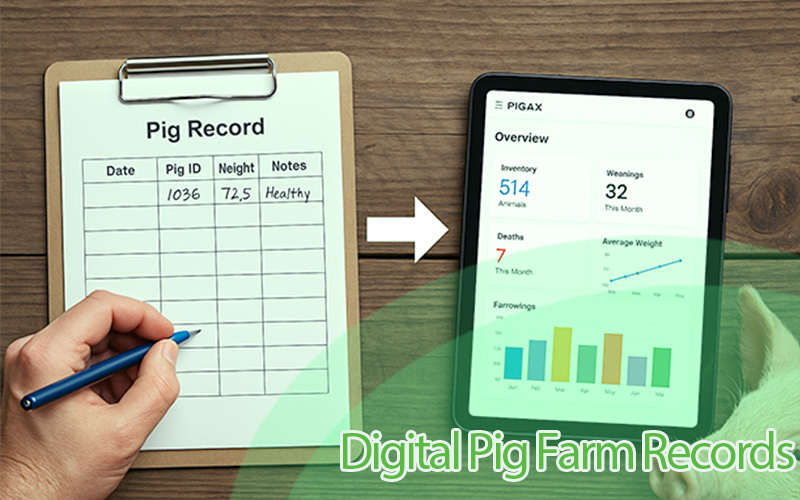5 Diseases Every Pig Farmer Must Know
Pig farming is a crucial part of the agriculture industry, providing a significant source of income and food supply. However, along with the numerous benefits of raising pigs, there also comes the responsibility of disease management. Disease awareness in pig farming is paramount to ensure the health and well-being of the animals, protect farm profits, and safeguard public health. In this article, we will explore the five diseases every pig farmer must know and understand in order to maintain a successful and sustainable pig farming operation.
5 Diseases Every Pig Farmer Must Know
I. African Swine Fever (ASF)
Understanding ASF and its Impact on Pig Farming
African Swine Fever (ASF) is a highly contagious viral disease that affects domestic and wild pigs. It poses a severe threat to the pig farming industry, leading to significant economic losses due to mortality and trade restrictions.
Mode of Transmission and Prevention Measures
ASF spreads through direct contact with infected pigs, contaminated objects, or consumption of contaminated pork products. Implementing strict biosecurity measures, such as controlling farm access, disinfection protocols, and quarantines, is vital to prevent ASF outbreaks.
Recognizing Symptoms and Early Detection
Recognizing early signs of ASF, including high fever, loss of appetite, and skin discoloration, is essential for prompt detection and containment.
Quarantine and Biosecurity Protocols
In the event of an ASF outbreak, quick isolation of infected pigs and strict quarantine measures are necessary to prevent the disease from spreading to unaffected areas.
II. Porcine Reproductive and Respiratory Syndrome (PRRS)
Overview of PRRS and its Economic Impact
Porcine Reproductive and Respiratory Syndrome (PRRS) is a viral disease that affects the respiratory and reproductive systems of pigs, causing reproductive failure, pneumonia, and decreased growth rates. Its economic impact on pig farming can be substantial, resulting in reduced productivity and increased treatment costs.
Routes of Transmission and Prevention Strategies
PRRS spreads through direct contact with infected pigs, contaminated equipment, or airborne transmission. Implementing biosecurity protocols, controlling pig movements, and segregating different age groups are essential preventive strategies.
Identifying PRRS Symptoms in Sows and Piglets
Early identification of PRRS symptoms, such as fever, coughing, and reproductive problems in sows, helps in initiating timely treatment and reducing the spread of the disease.
Vaccination and Biocontainment Practices
Vaccination plays a vital role in PRRS management, along with maintaining strict biocontainment practices to prevent disease transmission within and between farms.
III. Foot-and-mouth disease (FMD)
The Highly Contagious Nature of FMD
Foot-and-mouth disease (FMD) is a highly contagious viral disease that affects cloven-hoofed animals, including pigs. It can spread rapidly through direct contact with infected animals, contaminated surfaces, or even through the air.
Understanding FMD Symptoms in Pigs
Recognizing symptoms such as blisters on the mouth, feet, and teats is crucial in identifying and containing FMD outbreaks.
Steps to Prevent FMD Outbreaks on the Farm
Implementing strict biosecurity measures, maintaining proper hygiene, and restricting farm access are essential steps in preventing FMD outbreaks on pig farms.
International Trade Implications and Reporting Obligations
FMD outbreaks can have severe implications on international trade, leading to restrictions on pig and pork product exports. Therefore, prompt reporting of FMD cases to authorities is critical for disease control and trade negotiations.
IV. Swine Influenza (Swine Flu)
Differentiating Swine Flu from Other Respiratory Infections
Swine Influenza, commonly known as Swine Flu, is caused by influenza viruses that infect pigs. It is essential to distinguish it from other respiratory infections for accurate diagnosis and appropriate management.
Transmission Routes and Preventive Measures
Swine Flu can spread through direct contact with infected pigs, aerosols, or contaminated objects. Regular health checks, isolation of sick pigs, and proper hygiene practices are effective preventive measures.
Identifying Swine Flu Symptoms and Seeking Veterinary Care
Early recognition of Swine Flu symptoms, such as coughing, sneezing, and nasal discharge, is crucial in seeking timely veterinary care and implementing control measures.
Vaccination and Management Strategies
Vaccination is a valuable tool in preventing Swine Flu, alongside maintaining proper ventilation and environmental conditions to reduce the risk of transmission.
V. Porcine Epidemic Diarrhea (PED)
The Impact of PED on Piglets and Herd Health
Porcine Epidemic Diarrhea (PED) is a highly contagious viral disease that primarily affects piglets, leading to severe diarrhea and dehydration.
Biosecurity Measures to Prevent PED Outbreaks
Strict biosecurity protocols, including controlled farm access, disinfection, and transportation management, are essential in preventing PED outbreaks.
Managing and Treating Diarrhea in Piglets
Early recognition and proper management of diarrhea in piglets through fluid therapy and supportive care can significantly reduce mortality rates.
Disinfection Protocols for Controlling PED Spread
Effective disinfection of infected areas and equipment helps control the spread of PED and protect the health of the entire herd.
Conclusion
Maintaining disease awareness is a fundamental responsibility for every pig farmer to protect their livestock, optimize farm management, and ensure the production of safe and healthy pork products. By understanding the characteristics, transmission, symptoms, and prevention of these five diseases, pig farmers can take proactive steps to safeguard their herds, foster sustainable farming practices, and contribute to the overall growth of the pig farming industry. Collaborating with veterinarians and industry experts is crucial in enhancing disease prevention strategies, protecting pig health, and securing a thriving future for pig farming.




